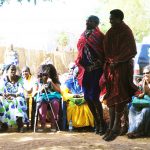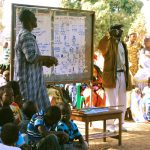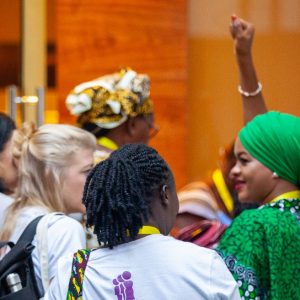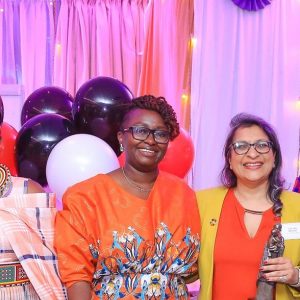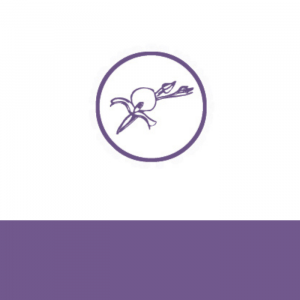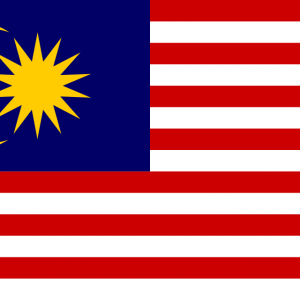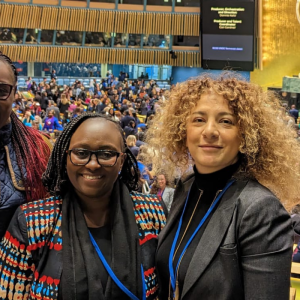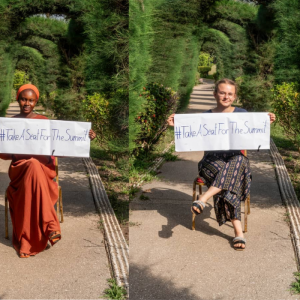Lucy, our Knowledge and Programmes Coordinator, spent two weeks in Senegal participating in the pilot of the Tostan Training Centre (TTC). Below is part two of a five part blog series…
Social Norms
Day two began with a range of warm-up activities led by participants, including a traditional Masaai song from our Kenyan partner Amos Leuka. We then went into a session on social norms, hearing the story of how Gerry Mackie and Molly Melching met – Gerry reading about Tostan’s first FGC abandonment declaration just after publishing his paper on how FGC can end, as footbinding did with public ceremonies acknowledging the social norm shift. Having read Molly’s book and worked at Orchid for two years I knew the story but to hear it from the two of them, bounced back and forth, was great to see.
A social norm was defined as a rule of action that is typical (others do it) and appropriate (others approve of doing it), constructed from beliefs about what others do and approve of doing. Social norms are maintained by approval (and anticipated positive negative sanctions) and disapproval (and anticipated negative sanctions).
Social norms are interdependent (rather than independent) actions. One example given for this was that one person in a rowing boat is independent and can decide which direction to go in. However, if three rowers rowing as part of a 200 strong team on a galley want to change direction, the only way to do this is to convince the whole rowing team.
We went into legal, moral and social norms and the differences between these three. The law can support or undermine a social norm, depending on the context and how the law is framed. If the law expresses a country’s disapproval it can be supportive but if a law is punitive it can be undermined; after the law against female genital cutting (FGC) in Senegal was passed, people were against it and the following day cut girls in protest, but after people began to understand more about the practice, they began to understand the law and asked to be able to decide and abandon themselves.
Additionally, we looked into religious norms which can cross legal, moral and social norms: they can be regulated by the state who can ensure you abide by them; they can match moral norms, e.g. thou shalt not kill; and they can be a social norm in that fellow reference group members may disapprove if you do not follow the norms and sanctions may ensue.
To change a social norm, joint attention is vital – everyone must see that the social norm has changed and know that everyone else has seen this – as enough people have to see that enough people are changing. This is why, in ending FGC, public declarations are so important.
Capacity to Aspire
The following day, we started off the session on aspirations sharing what we would like our great grandchildren to say about us in 2115 – a beautiful start to the morning which enabled us to discover each other’s passions and what was of utmost importance.
We followed this by miming our roles in society and discussing the influence we can have – as an individual, upon our family, community, country, continent and the world. In groups, we then came up with six people who have had such an influence – at the community, national and international level – and characteristics that determined them. It was fantastic to hear about local heroes within the communities where my group was from – in the Masaai, the Gambia and Liberia. Ultimately the team came up with 5 vital characteristics: visionary, respectful, courageous, compassionate and able to persevere. This revealed some serious aspirations amongst Tostan Training Centre participants, aspirations that I see taking all of us far.
We moved onto looking at houses of learning: the family/culture, formal education, religious education and the informal trades. We interrogated these forms of education – is it enough to develop the citizens we need to get to the society we want? Ultimately we decided that they were not enough – to develop connected visionary societies reflective of heroes within, we need to encourage those characteristics outlined above and people need the capacity to aspire.
In our session on capacity to aspire, we split into two groups and drew what our ideal villages would look like. There were many similarities between the two which reminded us of what we learned in the beginning – human dignity is an idea everyone can understand, get behind and work towards. We each brought out the importance of connection and collaboration between people, services for the village including health, education and a place to practice religion, and activities for people to do.
We discussed how Tostan looks to take the good and develop this in order to get the well-being that the community wants – a programme that brings agency. As Dianne Gillespie (drawing upon Arjun Appadurai, 2004) put it…
“Culture is like a map we are socialized into. Except not everyone has an equal map… Privileged people are given maps (e.g., education, guides, tutors). Those less privileged have a smaller, less detailed map and are less able to try out new directions. The work of development starts with awakening the capacity to aspire and to give voice. The capacity to aspire must be awakened as those less privileged must steer their own lives in their own directions. They can explore ways to expand and improve their maps. They can gain “voice.” They can become able to articulate their views and actively negotiate a more adequate map of their expanding possibilities.”
We need to build from what is present and the strengths that communities have, to what is desired. In order for this to happen, communities need to be aware of both their strengths and their desires. The gap between what is present and what is desired cannot be too large as hope may be lost. Rather this space needs to be scaffolded in order for communities to get to where they want to be. The capacity to figure out the steps to navigate towards new aspirations must be built.
Gerry Mackie then explained the need to first develop agency within, including capacity to aspire, self-efficacy (believing we can) and autonomy (the ability to make decisions). This gives motivation, and the capability of society can then be built through the provision of information – societies learn to work together. There is then an expansion of the public sphere as women and youth have the agency to speak out. Communities are then able to remake social rules, addressing the external influencing structures and opportunity structure, leading, ultimately, to community empowerment.
We went on to experience some of the participatory methods that Tostan use to encourage all participants to speak. This included using a ball to represent conversation flow – the ideal being the passing of the ball between participants – and each choosing an animal to represent him or herself and explaining the advantages and disadvantages this presents in a group scenario. Imagining monkeys swinging between donkeys, over turtles and below birds, with chameleons changing colour on the side lines, sheep responding to the group and lions stalking their prey, it was a great end to a day that added a light hearted touch to exploring each other’s personalities and needs that we had begun to explore that morning.
Visit to Keur Simbara
Wearing our traditional clothes, we set out to visit the village of Keur Simbara, one of the first communities to join Tostan’s CEP in 1991. We arrived to beating drums, whirling calabashes and many hands to shake, including that of Demba Diawara, village chief and Imam.
The dancing began as we swayed towards our seats and continued once we had sat down, with various members of the team joining in. Older village members danced with younger, men with women and girls with boys. The two masaai training participants were met with great whoops from the training group and village as they got up to do their traditional jumping dance.
Meeting Demba was, for a few of us, like meeting a celebrity. He is the force that said that FGC could not end in one village without the word being spread to the whole community, and took it upon himself to walk to each of the surrounding villages to share his understanding of FGC and why it should end. He told us that, of utmost importance in working to raise awareness within his social network, vital characterises were: intelligence, courage and diplomacy. Although the village was one of the first to abandon FGC, this was not brought up by community members – FGC had gone and they are looking toward the future.
We were really able to experience community wellness: what we had learned so far in the training was reflected in the community. The children danced, sang a song on democracy and community organising, read to us and were engaged and participating throughout the afternoon. The meeting was led by the treasurer, Doussou Kounate, and chair, Mamadou Konate, of the Community Management Committee (CMC) which has been managing local activities on health, education, environment and economic development since the early ‘90s. The chair presented their ten year plan – demonstrating community visioning for themselves in the extreme! Furthermore you could really see the ‘scaffolding’ – community practices and activities aligned with their vision. Doussou, a woman of 55 said that before the Tostan programme she was not permitted to speak at village meetings and would not have felt comfortable. Now, she led the majority of the meeting and, thanks to training, is a solar engineer!
We left as the sun was beginning to set. Families were heading back to their homes, people from the surrounding villages were walking back and the time taken for us to cover the short walk to the bus was dramatically lengthened due to varying dances with each person met on the way.
Read part 1 here.

